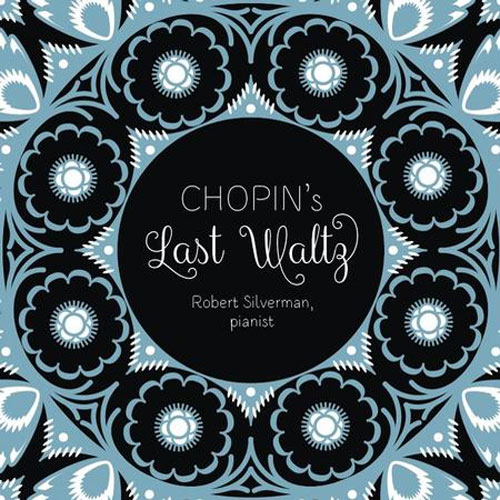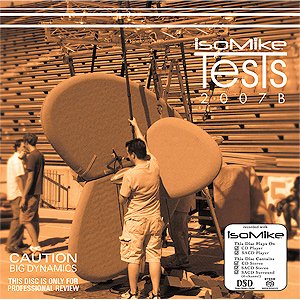
Chopin’s Last Waltz
At AXPONA, I went into a room where they were playing a beautiful piano recording on the turntable. Ray Kimber was in the room, and from his comments, I realized it was his recording. This surprised me because somehow I missed hearing this LP when it was first played at RMAF last year. When the LP ended, I told Ray that it sounded great, and yesterday a copy of this LP showed up at my house. Thanks, Ray.
If you’re not familiar with Ray’s IsoMike recordings, these are recordings done with what started out as an experimental microphone system. He had set up some impressive systems to show off his surround recordings over the years. As good as some of these demos sounded, I have to admit that I’m just not all that interested in surround sound. After listening to the Chopin piece at AXPONA, I knew I was very into this recording. Below is a picture of the IsoMike being installed from the cover of a test recording.

What’s on This LP?
The pianist on the recording is Canadian Robert Silverman who has made more than 30 recordings, for labels like EMI Marquis Classics and CBC Records. His 1977 recording of Liszt’s piano music received a Grand Prix du Disque from the Liszt Society of Budapest. In 2010, he released an SACD of Mozart sonatas recorded with Ray Kimber’s IsoMike process.
I’m in no way an expert on classical piano performances, but I know I really like solo piano pieces when they are played and interpreted well, especially pieces from List, Mozart and Chopin. I have heard all of the “Last Waltz” composition from Chopin before, and I really liked Silverman’s interpretation and execution of these pieces. The overall sound of Silverman’s playing is solid and sure.
The recording is simply beautiful with a very three dimensional sound and true tone colors. Ray Kimber’s IsoMike recording technique is the result of much experimentation over the years. Ray says on this recording, “Two microphones see Bob’s piano. The microphone on the right only sees the right-hand side of the acoustics of the hall because it has no line of sight to the other microphone—it’s cut off by a baffle. That was a revelation to me, because it removed the interference. If the left microphone sees the right acoustic from the hall, all it does is interfere with it, muddle it, infuse it.”
This recording doesn’t use any processing like EQ, filtering, compression, or limiting. Ray says, “the danger is if you don’t use a limiter in the analog chain, then you stand a chance of clipping the DSD digital signal and the recording is ruined.” I didn’t understand all of the technical explanations I heard Ray share, but I can tell you, he did this recording just right. I can also tell you that this is the best recording of a solo piano that I have ever heard in my system, and the performance was very enjoyable as well.
Everyone knows how much I prefer vinyl and analog recordings, but I have to admit that I would have never guessed this LP was sourced from a digital recording. So, I will admit that you can get incredible vinyl when the lacquers are cut directly from DSD256 files by Kevin Gray. I’d love to hear your comments regarding similar LPs you may be familiar with.
Technical Information:
Chopin: Ballade 4 in f, Op.52; Fantasie in f, Op.49; Mazurka in c-sharp, Op.63 No.3; Mazurka in f, Op.68 No.4; Nocturne in E-flat, Op.62 No.2; Prelude in c-sharp, Op.45; Valse in A-flat, Op.64 No.3 Robert Silverman, piano 180g Vinyl LP! Plated & Pressed at Quality Record Pressings, LP lacquers cut directly from a DSD256 file by Kevin Gray at Cohearent Audio – IsoMike 5606 (LP) 2017. Available from Acoustic Sounds; DSD files available from NativeDSD, produced by Ray Kimber.
![]()
